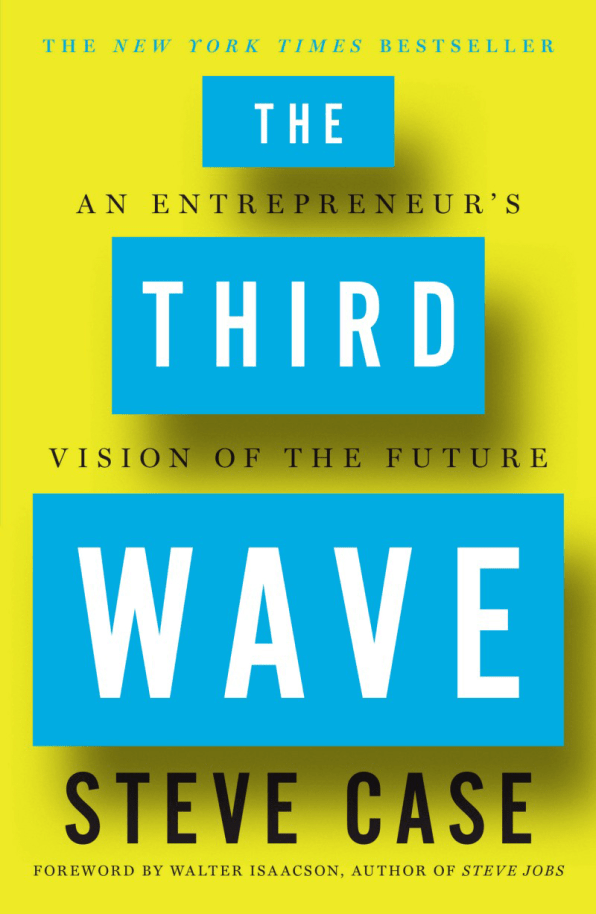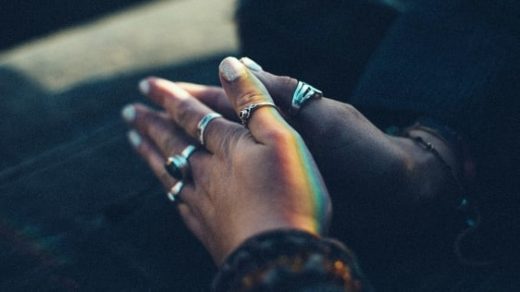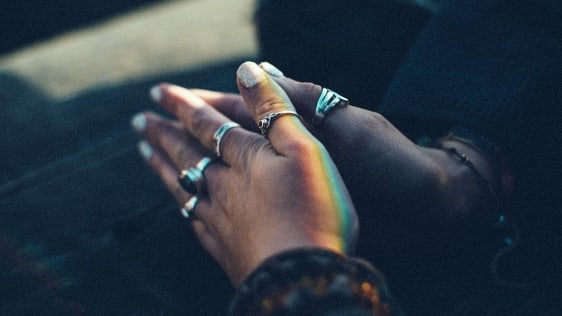For Communities Of Color, Startup Funding Efforts Can Hold Promise And Pitfalls
Twenty years before J.D. Vance published his best-selling memoir, Hillbilly Elegy, Harvard sociologist William Julius Wilson wrote an elegy of his own.
“Few observers of the urban scene in the late 1960s anticipated the extensive breakdown of social institutions and the sharp rise in rates of social dislocation that have since swept the ghettos and spread to other neighborhoods that were once stable,” Wilson declared in his 1996 book, When Work Disappears. Although he made clear that these places were not monolithic, most of what he described were communities made up predominantly of African-Americans. “Jobless black poverty areas,” he called them.
Vance’s Hillbilly Elegy is, of course, about a different demographic: “the millions of working-class white Americans of Scots-Irish descent who have no college degree.”—or, as he puts it in plainer language, “hillbilly people.”

I’ve been thinking a lot about both books–and the two groups that Wilson and Vance have each written about so movingly–ever since Steve Case’s investment firm, Revolution, announced this month that it had established a $150 million Rise of the Rest seed fund to back startups outside of Silicon Valley. Vance, who has a background in venture capital and joined Case’s operation earlier this year, serves as the fund’s managing partner.
For Vance, the fund is a means to help revive a Rust Belt economy that has been beset by a decades-long decline in manufacturing. His desire is not only to spur new business development in the heartland cities where Revolution is concentrating its efforts, but to see those gains stretch into more rural locations and smaller towns, like Middletown, Ohio, where he grew up.
“Stronger, more robust entrepreneurial ecosystems can . . . have ripple effects for the region more broadly as the hubs attract new talent who may launch startups of their own, and other businesses and services emerge to support the influx,” Vance told me.
It’s a smart strategy. During economic expansions, startups and young, fast-growing companies generate most of the new jobs in America. Fostering entrepreneurship by pumping more capital into “flyover country”–along with increasing investments in education and training, as well as raising wages and enforcing standards to turn bad jobs into better jobs–can be a powerful tool in boosting the fortunes of those who’ve been left behind.
Yet it’s also worth keeping in mind that as much as geography separates the nation, the color of one’s skin often presents an even starker dividing line. As a study from the Institute for New Economic Thinking points out, the fall of middle-class employment opportunities “has hit blacks as well as Hispanics much more severely than whites.”
Vance is quick to note that as he and Case have crisscrossed the country, they have “met with–and invested in–many founders who are of color and scaling great businesses between the coasts.” Their Rise of the Rest tour has, in fact, taken them to Detroit and other cities with large black and brown populations. And the winners of their pitch competitions have been of many races and ethnicities and different genders.

“The leaders behind these emerging companies,” Case asserts in his own book, The Third Wave: An Entrepreneur’s Vision of the Future, “will end up being the most diverse group of CEOs America has ever produced.”
But discrimination cuts deep, so deep that it will be an extremely tall order for Rise of the Rest, or any initiative designed to encourage entrepreneurship, to convert its successes into tangible outcomes for working families of color. The white working class has it tough; the black working class carries an extra burden.
“Our workers deal with racism on the job—plain and simple,” Tanya Wallace-Gobern, executive director of the National Black Worker Center Project, remarked recently. “You can’t assimilate your way out of it. You can’t educate your way out of it. It is predatory.”
An analysis last year by the Economic Policy Institute and Oxfam America found that 45% of Latinos and more than 38% of African-Americans earn under $12 an hour, which translates into less than $25,000 a year for a full-time worker. Only 27% of whites fall into that category.
The jobless rate now stands at 7.3% for blacks and 4.7% for Hispanics; for whites, it’s 3.6%. Over the past 60 years, the black unemployment rate has consistently been about twice what it is for whites. And it doesn’t matter what educational level blacks have attained; the general pattern still holds.
Vance expresses particular concern about those who’ve become so discouraged that they’ve stopped actively looking for work, dropping out of the labor force altogether. “The private sector has to play a role in reengaging these folks,” he says. “It’s both a moral imperative and something that would benefit the many companies trying to find good employees.”
The disturbing trend that Vance highlights has been building for a long time among white males, especially those with little schooling. But, again, declines in labor force participation for men in their prime working years (25 to 54) have been steepest among blacks.
The Startup As A Solution
As experts look for solutions in black America, many are seizing on the need for more entrepreneurship—for the same reasons that Vance believes new business creation can positively impact his community.
“The greatest opportunity that we have to change generational wealth and generational inequality is through the startup scene,” Harold Hughes, the founder of Bandwagon, an online marketplace for tickets to sporting events, told a gathering of the Black Angel Tech Fund in October.
One interesting approach is being taken by the $10 million Impact America Fund, which is investing in technology-enabled businesses that are poised to lift up low- to moderate-income communities. Although most of the fund’s investments have gone into black-owned firms, its portfolio includes PawnGuru, an online platform founded by two white men that makes the buying, selling, and pawning of used goods faster and easier than through traditional avenues.
“They have a really nuanced understanding of how pawnshops are essentially providers of microfinance in low-income neighborhoods,” says Kesha Cash, Impact America Fund’s general partner. “They’ve made things more efficient.”
Others are focused exclusively on helping minority entrepreneurs get going—and it is here where some of the biggest obstacles lie.
On average, black business owners have fewer assets, lower wealth, and less disposable income than white entrepreneurs. This gives them relatively little to invest in their ventures. It also makes it harder for them to obtain credit.
“The challenge that most minority-owned companies have is qualifying for bank financing,” says Ray Waters, president of the Detroit Development Fund, which administers an Entrepreneurs of Color loan program that just tripled in size to more than $18 million.
The Trust Gap
Beyond a wealth gap and a credit gap, there’s also a trust gap. In a survey by the Association for Enterprise Opportunity, 51% of black respondents indicated that they felt unfairly treated by financial institutions. Just 26% of their white counterparts had the same view.
Under these conditions, taking an idea and turning it into a business can be nearly impossible. “There are a lot of black entrepreneurs who aren’t able to make it to a venture-capital round because they don’t have the money to even get off the ground,” says Connie Evans, AEO’s president. If VCs truly want to stimulate black businesses, it “will take intentionality—going into and working with the community.”
To underscore the terrible difficulties of African-Americans is not to discount the serious problems facing the folks whom Vance has given voice to.
Indeed, although their findings have sparked a fair bit of controversy, the fundamental takeaway from Princeton’s Anne Case and Angus Deaton is undeniable: Far too many of the white working class are suffering “deaths of despair”—death by drugs, alcohol, and suicide. Exacerbating the situation, they say, are “progressively worsening labor market opportunities” for whites with no more than a high school credential.
All the while, although there has been improvement, blacks remain at a major health disadvantage—in part because of the incredible stress that results when having to constantly overcome racial barriers, a phenomenon dubbed “John Henryism.” And poor, largely African-American pockets of cities are witnessing a surge of homicides due to what researchers say is a lack of jobs.
A “Fan Boy” Of The Professor
Much to his credit, Vance has never downplayed anyone else’s experience as he has related his own. “This is not a story about why white people have more to complain about than black people or any other group,” he writes in Hillbilly Elegy. He also has cited William Julius Wilson as an inspiration, referring to himself as a “fan boy” of the professor when the two took the stage together in September at the Brookings Institution for a conversation on race and class.
In the end, there is a balance to be struck: to recognize that working-class families throughout America are struggling, but that communities of color are subject to unique hardships. “It’s important to have both things being told–the commonalities and the differences–because that’s real,” says Steven Pitts, associate chair of the Center for Labor Research and Education at the University of California at Berkeley.
This is a message that Wilson himself put forth in When Work Disappears. “The extent of the racial divisions in this country should not be minimized,” he wrote. “Nonetheless, the emphasis on racial differences has obscured the fact that African-Americans, whites, and other ethnic groups share many common concerns, are beset by many common problems, and have many common values, aspirations, and hopes.”
One hope these days, whether you’re white or black, is to start up a new business by pulling in enough green.
Fast Company , Read Full Story
(18)














